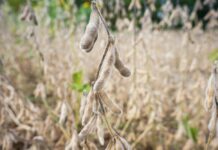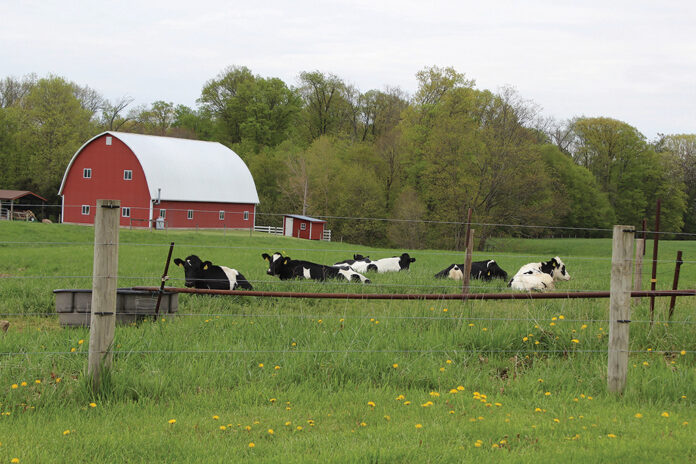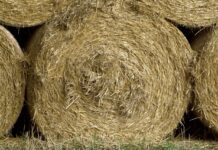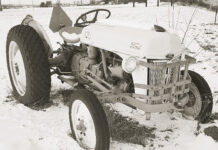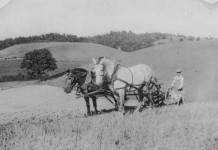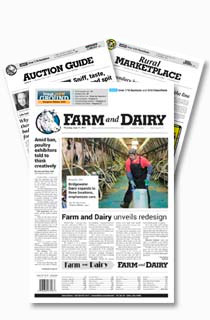Dairy farmers are hard-working and dedicated business people with deep roots to their land and cows. Many multigenerational farms are run as a way of life. Unfortunately, many farms cannot survive beyond a couple generations because profits are not adequate to allow the next generation to take over. Based upon Ohio State University and New York State Dairy Statistics, the profit per cow per year has declined the previous several decades. Dairy farms that operate as a “way of life” and do things the way that dad or granddad did cannot survive because profitability in today’s world requires improved efficiency, innovation and scale. A popular dairy speaker once said, “A farm run as a way of life is a poor business, but a farm run as a business is a great way of life.”
The modern dairy farmer must possess a broad knowledge of skills to be profitable: finance, budgeting, marketing, labor, machinery repair, cow health, calf care, vaccination, reproduction, weather forecasting, soil fertility, manure management, regulations and more. A successful long-term dairy farmer said that a profitable dairy farmer is a jack-of-all-trades but a master of none.
Cornell University’s Dairy Farm Business Summary has provided financial data analysis for over 50 years to hundreds of dairy farms. Many of the same farms have participated for decades. A review of the financial data collected year after year might provide insight into farms that are consistently in the top 25% of profitability.
What are some key characteristics of these profitable farms? Five categories of profitable dairy farms include high component yield herds, labor efficient dairies, low cost of production farms, value added dairy farm and high efficiency farms with general overall good management. Let’s review each of these dairy farm strategies.
High-component farms
High-component farms produce in excess of 7 pounds of components per cow per day for all cows in the herd throughout the year. Pounds of butterfat and protein have become the key drivers of milk income. A herd that is shipping 90 pounds of milk per cow at 4.4% butterfat and 3.4% milk protein is producing 7 pounds of components per cow per day. At current butterfat and protein pricing (Federal Order 33) each cow will generate $17.50 per day. A herd that is shipping 80 pounds of 4.0% butterfat and 3.2% protein is producing 5.8 pounds of components per cow per day. Each cow will generate $14.50 per cow per day. The high component farms have similar purchased grain and forage costs compared to other herds. Additional gross income of $3.00 per cow with similar purchased costs increases profit per cow.
Labor-efficient farms
Labor-efficient farms produce in excess of 1.8 million pounds of milk per year per full-time paid worker. Average labor cost from financial data is approximately $3 per hundredweight for all farms. High labor-efficient farms achieve in excess of 65 cows per full-time worker. Farms that are less labor efficient have 35 cows per full-time worker. Farms that have unpaid family labor will obviously reduce labor cost and contribute to farm profit. Automated milking farms will have lower labor cost per hundredweight of milk but have higher fixed costs.
Low-cost farms
Low-cost farms produce milk at $4 per cwt less than average. This lower cost cannot be associated with one single input cost. Some trends would indicate that these dairy farms have lower fixed cost (no mortgage or land cost), unpaid family labor, less purchased feed cost from more home-raised grain and forage. These low-cost farms also are in the upper level of production.
High-value farms
High-value farms have developed specialized marketing systems to increase direct sales of milk, cheese, meat and agritourism. The addition of dairy beef cross breeding to dairy farms has provided a revenue stream to generate more profit for the overall farm business.
Good management
General overall management farms achieve profit by having above average production, efficient use of labor, excellent cost control of purchased grain, forage and equipment and generate some off-farm revenue with family labor.
Profitable dairy farms, regardless of which of the five strategies implemented, have two key management factors that make them successful. These two key factors are quality cow care and high-quality forage production. Every successful dairy farm has someone that is very adept at reading their cows and preventing their cows from becoming ill, whether it be the owner of a well-trained herd manager that is focused on cow care. As herd size has increased the technology trend has moved the industry to use and depend upon cow wearable “Fitbit-like” technology. This cow-friendly technology provides valuable data including hourly body temperature, rumination, daily steps and much more. However, this data should be a supplement to the excellent cow whisperer who is experienced, creative, knowledgeable on properly reading, diagnosing cows and maintaining a healthy herd.
A second key characteristic of successful and profitable dairy farms is the ability to consistently produce high-quality silage and forages. Quality forage requires knowledge of soils, fertility, seed genetics, planting, harvesting and storage. A glitch in any one of the forage production links can lead to less than quality forage. High-quality forage provides the basis for high health and highly productive dairy cows. It also reduces excess purchases of off-farm crop and grain expense.
In summary, take time each year to compare your farm to other farms by using the New York State Dairy Statistics and Ohio Farm Business Summary benchmark program available online. Evaluate your farm on component yield, labor efficiency, cost control, value-added performance and overall management. Strive to learn and observe your cows and focus on improve forage quality. Set goals each year to determine how to improve and leverage your strengths to achieve or maintain performance in the top 25% of farms. Continual improvement will lead to consistent high performance to achieve long-term profitability that will last for the next generation.





